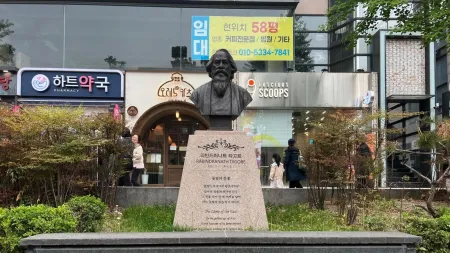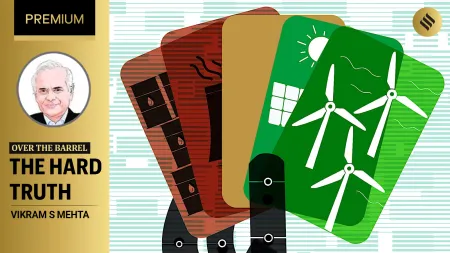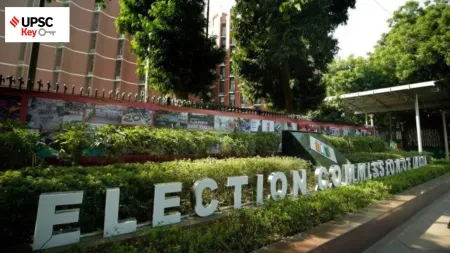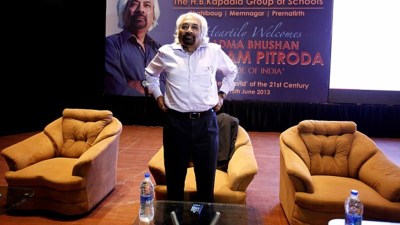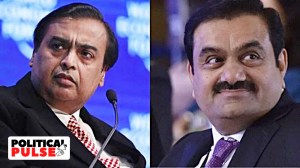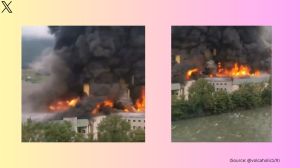- India
- International
‘Rocket Boys’ Season 2: The life of Homi J Bhabha, and how he helped pioneer India’s nuclear programme
We take a look at the life of Jehangir Homi Bhabha, the Cambridge-educated physicist who helped established research institutions in India.
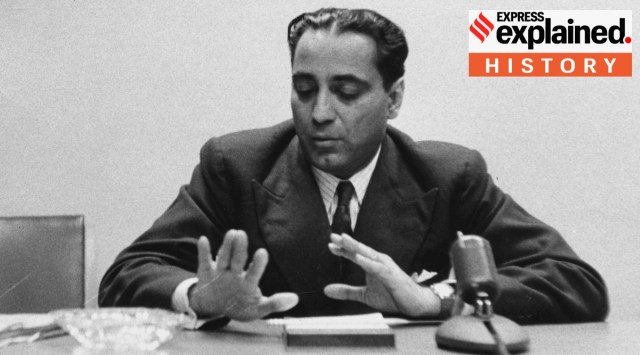 Physicist Homi J Bhabha. (Express Archives)
Physicist Homi J Bhabha. (Express Archives) The SonyLiv series ‘Rocket Boys’, which focuses on the lives of Indian scientists Homi J Bhabha and Vikram Sarabhai and their roles in creating landmark scientific programmes and institutions in a newly-independent India, premiered its second season on March 16.
Since it began in 2022, the series starring actors Jim Sarbh as Bhabha and Ishwak Singh as Sarabhai has garnered appreciation. Within the wide variety of OTT shows and films made in India, it is also unique as it focuses on real-life scientists. While some of its aspects and characters are fictitious, the contributions of the real figures to the development of modern sciences in India were remarkable.
We take a look at the life of Jehangir Homi Bhabha, who is credited with pioneering India’s nuclear programme.
Early life, association with Tatas and years at Cambridge
Homi Jehangir Bhabha was born on October 30, 1909, to a wealthy Parsi family from Mumbai. His grandfather was the Inspector General of Education in the State of Mysore. Bhabha’s father Jehangir Hormusji Bhabha was educated at Oxford and later qualified as a lawyer. His mother Meherbai was the granddaughter of Sir Dinshaw Maneckji Petit, a textile factory owner in Bombay who was known for his philanthropic efforts.
Bhabha attended schools in Mumbai, joining Elphinstone College and then the Royal Institute of Science in the city. In 1927, Bhabha attended the Gonville and Caius College in Cambridge.

Both his uncle Sir Dorab J. Tata – the son of Tata group’s founder Jamsetji Tata – and his father wanted Bhabha to become an engineer and work at the Tata Iron and Steel Company at Jamshedpur. But once at college, he became more interested in theoretical physics. In 1928, he wrote to his father:
“I seriously say to you that business or job as an engineer is not the thing for me. It is totally foreign to my nature and radically opposed to my temperament and opinions. Physics is my line. I know I shall do great things here. For, each man can do best and excel in only that thing of which he is passionately fond, in which he believes, as I do, that he has the ability to do it, that he is in fact born and destined to do it… It is no use saying to Beethoven ‘You must be a scientist for it is great thing’ when he did not care two hoots for science; or to Socrates ‘Be an engineer; it is work of intelligent man’. It is not in the nature of things. I therefore earnestly implore you to let me do physics.”
At Cambridge, he was taught by Paul Adrien Maurice Dirac, a Mathematics professor who was awarded the Nobel Prize in Physics in 1933 with Erwin Schrodinger for their work in quantum theory. Bhabha went on to receive various scholarships. His work centred around cosmic rays and he earned a PhD in nuclear physics in 1934.
Prof. Devendra Lal, an Indian nuclear physicist, once wrote that Bhabha’s work here developed on several issues relating to cosmic ray phenomena and the interactions of electrons, protons and photons at high energies, in context to issues in the fields of quantum mechanics and relativity. “These advances were made by him in the 30’s, when little was known about the nature of high-energy interactions,” he said.
Homi J Bhabha’s work in India
Bhabha came to India in 1939 for some time, but his plans to return to England for his academic work were halted because of the Second World War’s onset. In 1940, he joined the Indian Institute of Science at Bangalore, where a Readership in Theoretical Physics was specially created for him. Future Nobel laureate CV Raman was then the Director of the Institute. He was made a Professor in 1944. Vikram Sarabhai also spent a short period at the Institute when Bhabha was there.
When Bhabha was working at the IISc, higher-level facilities for research on Physics were limited in India. In March 1944, he wrote to the Sir Dorab J. Tata Trust for establishing “a vigorous school of research in fundamental physics”.
Writing his proposal, he said: “There are, however, scattered all over India competent workers who are not doing as good work as they would do if brought together in one place under proper direction. It is absolutely in the interest of India to have a vigorous school of research in fundamental physics… If much of the applied research done in India today is disappointing or of very inferior quality it is entirely due to the absence of sufficient number of outstanding pure research workers.”
An early proponent of nuclear energy, he wrote, “Moreover, when nuclear energy has been successfully applied for power production in say a couple of decades from now, India will not have to look abroad for its experts but will find them ready at hand.”
The trustees accepted Bhabha’s proposal the Institute began work in April 1944. Mumbai was chosen as the location as the Government of Bombay showed interest in becoming a joint founder of the proposed institute. The institute, named Tata Institute of Fundamental Research (TIFR), was inaugurated in 1945. The present building of the Institute was inaugurated by then Prime Minister Jawaharlal Nehru in January 1962. Nehru, with whom Bhabha also had a personal friendship, earlier laid its foundation stone in 1954.
The Institute received financial support from the Government of India from its second year, through the Council of Scientific and Industrial Research (CSIR) and the Ministry of Natural Research and Scientific Research.
CV Raman would describe Bhabha, whose interests also spanned classical music and sketching, as “the modern equivalent of Leonardo da Vinci”. According to his brother Jamshed, “For Homi Bhabha, the arts were not just a form of recreation or pleasant relaxation; they were among the most serious pursuits of life and he attached just as much importance to them as to his work in mathematics and physics. For him, the arts were, in his own words, ‘what made life worth living’.”
Aiding the growth of institutions and nuclear energy
Bhabha was instrumental in picking the people who would be associated with the institute and gave them opportunities to grow. This was also seen in his passion for the development of nuclear energy in India as a field of study.
On April 26, 1948, he sent a note on a new ‘Organisation of Atomic Research in India’ to Nehru, writing: “The development of atomic energy should be entrusted to a very small and high-powered body composed of say, three people with executive power, and answerable directly to the Prime Minister without any intervening link.”
He also detailed the structure of such a body and its functioning. The Government of India accepted Bhabha’s proposal within a few months after its submission and with the promulgation of the Indian Atomic Energy Act 1948, the Atomic Energy Commission was formed in August 1948. Later in 1954, he led efforts to establish the Atomic Energy Establishment (AEET) in Trombay, Maharashtra, for a multidisciplinary research program.
Throughout his life, Bhabha noted the importance of developing opportunities for science to flourish in India. In an address to the Assembly of the Council of Scientific Unions in 1966, Bhabha said, “It is interesting to note that practically all the ancient civilizations of the world, Persia, Egypt, India, and China, were in countries which are today underdeveloped… What the developed countries have and the underdeveloped lack is modern science and an economy based on modern technology.”
Homi Bhabha died in a plane crash on the way to Geneva on January 24, 1966, and to date, theories surround its circumstances. AEET was later renamed the Bhabha Atomic Research Centre (BARC) to mark his role in spearheading the institution’s growth. Bhabha had also served as the head of India’s nuclear program until his death.
More Explained
EXPRESS OPINION
May 08: Latest News
- 01
- 02
- 03
- 04
- 05




